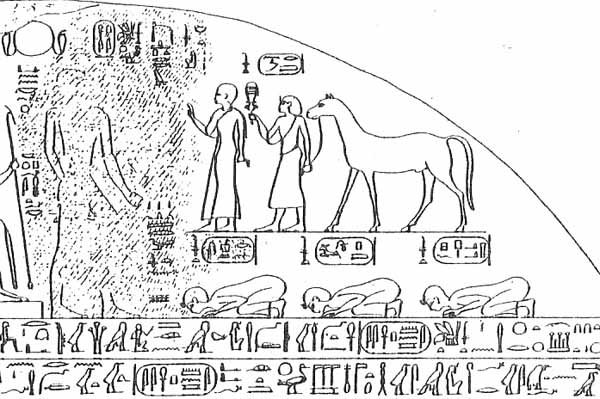
Piye is commonly referenced as the ruler of Kush (Nubia) between 747-716 BC. There is some debate over the reading of his name. His birth name is given as Piankhi, and some sources claim that this version of his name was a bad translation of his true name Piye. He is also referred to under the names Piankhy, Piye, and Piyi.
Piye’s throne name was Men-kheper-re, although there are other variations of this name too, most commonly, Menkheperra. Piye is mostly remembered for being the first Nubian ruler to unite his country with the rule over Egypt.
At the time of Piye’s reign much of Kush, or Nubia, was under the rule of Egyptian kings and Piye appears to have waited until the disarray in Egypt (due to that country being divided by four different kings claiming the right to rule) was such that he could concentrate on Nubian unity.
Piye had treaties with Nen-Nesut (Heracleopolis) and Khemenu (Hermopolis), both cities in Egypt. He also had influence in Thebes, via his sister, Amenirdis, who was an adoratrice (priestess) within the cult of the god Amun. She was also the heiress of Shepenwepet I, possibly via negotiations between this particular ‘God’s Wife of Amun’ and Piye’s father, Kasta.
Using these influences, Piye became ruler of both Nubia and Upper Egypt, but he was not finished. When Piye started to extend his sphere of influence into middle and lower Egypt, Tefnakhte, a prince of western Egypt, based in Sais, laid siege to Heracleopolis, which remained loyal to Piye.
The rulers of Heracleopolis turned to Piye for help and he gathered an army for the purpose of invading middle and lower Egypt. Piye and his army relieved Heracleopolis and went on to conquer many other cities, including Memphis. His military success led to the capitulation of several kings of the Nile Delta, effectively giving him control of the area.
Tefnakhte fled to an island in the Nile Delta and eventually conceded defeat, but he refused to pay homage to Piye. This didn’t seem to worry Piye too much as he simply upped and left, returning to Nubia. There are no records to show that he ever returned to Egypt after his military campaign.
In theory, Piye had conquered Egypt, but in practice his influence only extended as far as the lands he actually conquered during his campaign. Tefnakhte and his fellow Lower Egyptian rulers were left to do as they would and Piye had no influence over them. Piye’s brother, Shabaka Neferkare, was left to conquer the remaining areas of Egypt upon succeeding Piye.
Piye’s military campaign is well remembered because Piye made sure of it. On his return to Nubia, Piye has stelae inscribed with tales of his victories, which has since been found and translated. The stelae now resides in the Cairo museum, but was originally discovered by the archeologist, George Reisner in 1862, in the temple of Amun at Gebel Barkal.
The stelae is dated from the 21st year of Piye’s reign and measures six feet in height and four and a half feet wide. It is inscribed with a picture of Piye receiving supplication from many of the major rulers that he defeated during his campaign, watched over by the god, Amun. Beneath this depiction runs the story of Piye’s campaign. The victory stelae is particularly noted for Piye’s uncommon behavior, such as forgiving his enemies and attempting to avoid bloodshed.
Piye was clearly a fan of his own actions and achievements. The following passage is taken from the stelae and is typical of the style applied to the entire piece:
‘Command which my majesty speaks: “Hear of what I did, more than the ancestors. I am a king, divine emanation, living image of Atum, who came forth from the womb, adorned as a ruler, of whom those greater than he were afraid; whose father knew, and whose mother recognized that he would rule in the egg, the Good God, beloved of the gods, achieved with his hands, Meriamon-Piankhi.’
Quite an introduction and it is clear that Piye wasn’t shy of singing his own praises. The entire stelae translation can be read at this link and makes for fascinating reading in its depth of detail, and because it is written as Piye wished it to read. He clearly believed that history is written by the victors.
When Piye died he was buried at El-Kurru.
Piye seems to have been an extremely capable military leader, also skilled in the art of politics, but his choice to forgive his enemies and his return to Nubia, leaving his newly conquered lands in the hands of underlings, make him unusual for kings of the time.







